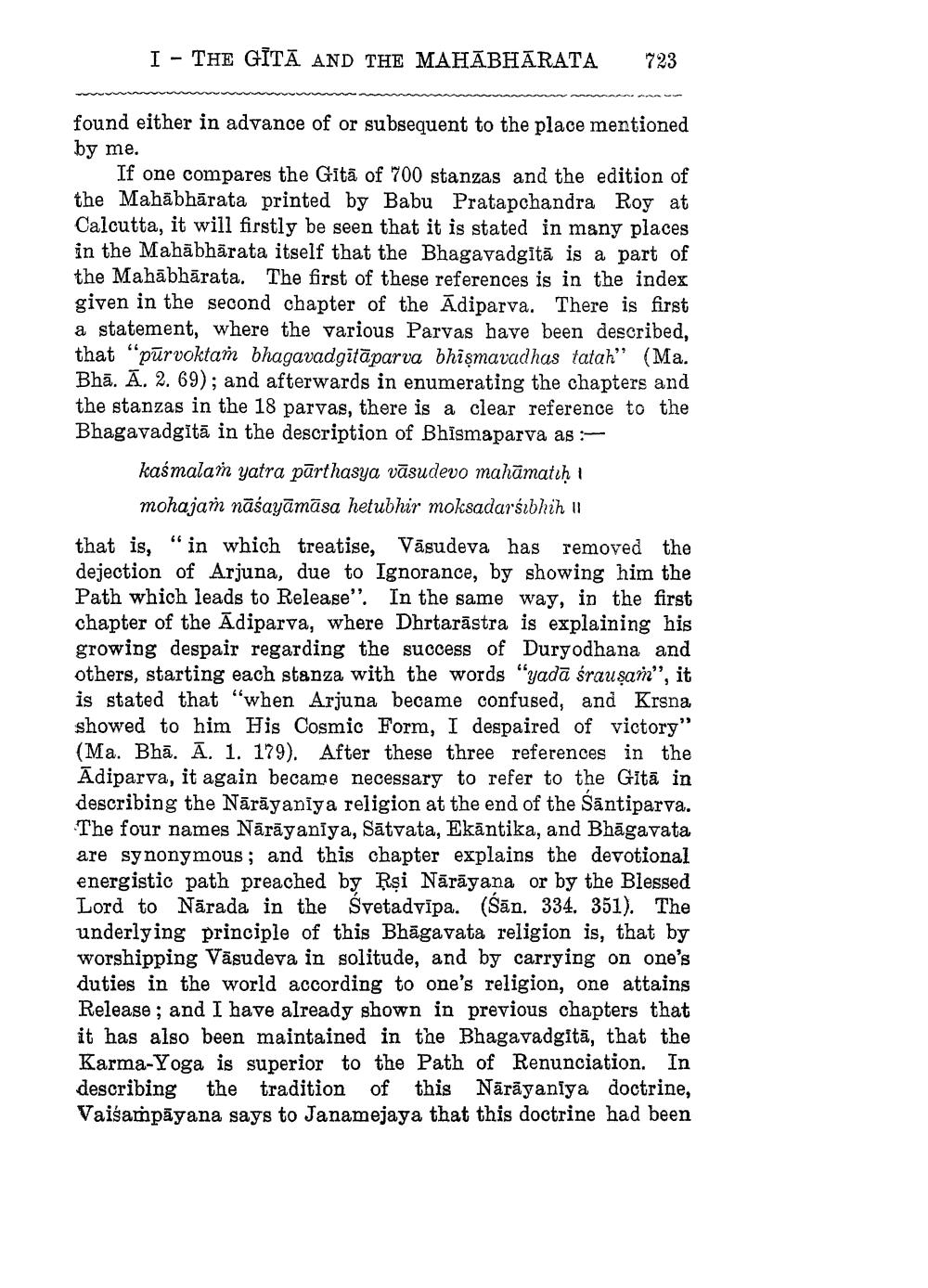________________
I - THE GĪTĀ AND THE MAHABHARATA
723
found either in advance of or subsequent to the place mentioned by me.
If one compares the Gitā of 700 stanzas and the edition of the Mahābhārata printed by Babu Pratapchandra Roy at Calcutta, it will firstly be seen that it is stated in many places in the Mahābhārata itself that the Bhagavadgitā is a part of the Mahābhārata. The first of these references is in the index given in the second chapter of the Adiparva. There is first a statement, where the various Parvas have been described, that "pūrvoktam bhagavadgitāparva bhişmavad has tatah" (Ma. Bhā. A. 2. 69); and afterwards in enumerating the chapters and the stanzas in the 18 parvas, there is a clear reference to the Bhagavadgita in the description of Bhismaparva as -
kaśmalam yatra pārthasya vāsudevo mahämatiḥ 1 mohajam nāśayāmāsa hetubhir moksadarśıbhih 11
that is, “in which treatise, Vāsudeva has removed the dejection of Arjuna, due to Ignorance, by showing him the Path which leads to Release". In the same way, in the first chapter of the Adiparva, where Dhrtarāstra is explaining his growing despair regarding the success of Duryodhana and others, starting each stanza with the words "yada śrausam", it is stated that "when Arjuna became confused, and Krsna showed to him His Cosmic Form, I despaired of victory" (Ma. Bhā. Ā. 1. 179). After these three references in the Adiparva, it again became necessary to refer to the Gitā in describing the Nārāyaniya religion at the end of the Santiparva. The four names Nārāyanīya, Sātvata, Ekāntika, and Bhāgavata are synonymous; and this chapter explains the devotional energistic path preached by Rsi Nārāyana or by the Blessed Lord to Nārada in the Svetadvipa. (Sān. 334. 351). The underlying principle of this Bhāgavata religion is, that by worshipping Vasudeva in solitude, and by carrying on one's duties in the world according to one's religion, one attains Release; and I have already shown in previous chapters that it has also been maintained in the Bhagavadgitā, that the Karma-Yoga is superior to the Path of Renunciation. In describing the tradition of this Nārāyaniya doctrine, Vaisampāyana says to Janamejaya that this doctrine had been




